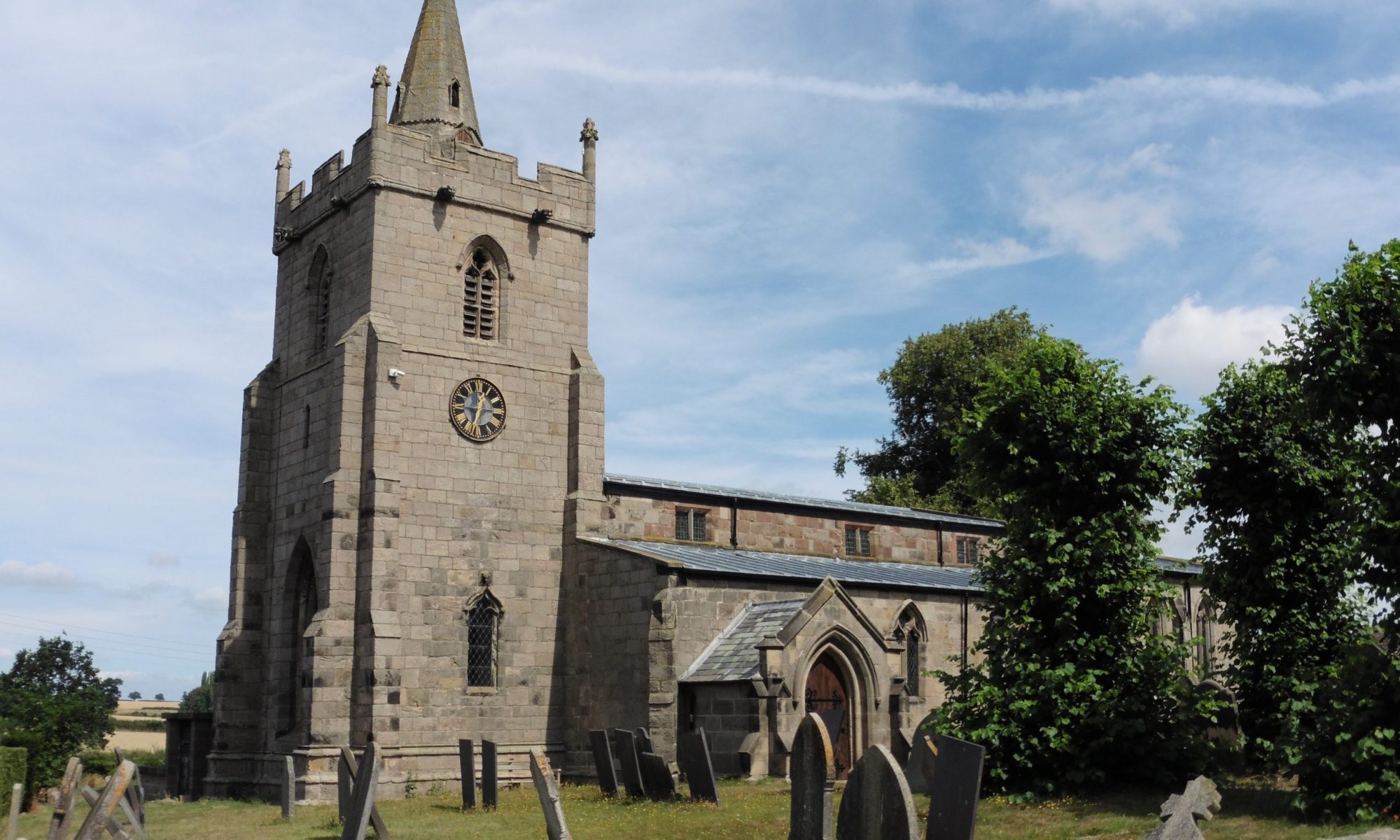The Civil War began in 1642, when Elizabeth was 16 and brother Henry 11. There was a Parliamentary garrison at Burton trying, somewhat unsuccessfully to hold the Trent river crossing. In 1644 Sir John Gell moved to Barton Blount which had been deserted by the Roman Catholic Merry family to whom the Blounts had sold it (in 1546). It was now a fortified manor house with a moat and drawbridge and two tall towers either side of the entrance. It was garrisonned with 700 horses.
Church Broughton lay between the Royalists at Tutbury Castle and the Parliamentarians at Barton Blount. No doubt the church tower made a good lookout point. Both sides depended on the district for supplies. The King came by three times, staying at Tutbury in 1642 and that cost Uttoxeter ?608 13 2d and Loxley ?85 8 6d. In 1645, the Tutbury soldiers laid down their arms until they were paid, so Marchington was told to send 4 sufficient able horses or ?20 in money to supply same towards recruiting troops. On another occasion they had to send provision for 100 foot, daily until further order -‘hereof fail not at your perills’. Uttoxeter paid ?30 and then ?21, in lieu of six horses and their accoutrements.
Church Broughton came under Sir John Gell’s influence and his soldiers were said to be ‘as dextrous at plunder as at fight. His regiment of foot were good stout fighting men, but the most licentious, ungovernable wretches. Without any remorse, he suffered his men indifferently to plunder both honest men and cavaliers’. The vicar of Church Broughton, Emmanuel Heyward, was also Rector of Barton, so Thomas Ley was appointed by the Commonwealth in his place, from 1642-5. Only clergy willing to give up the Book of Common Prayer were allowed to stay. A canonball has been found in the Vicarage garden, but noone knows if it had been used. Cromwell House Farm was named from these troubled times.
After the King was defeated at Naseby on 14th June 1645 a party of Royalists were heading north via Bridgenorth, Lichfield and Tutbury and on towards Ashbourne. They would have come on the old road from Heath House to Heath Top. As they passed Broughton, 500 horsemen from Barton fell on their rear. Three or four on both sides were killed. Twenty Royalists were hurt and twelve parliamentarians and a captain taken prisoner. Two men were killed at Alkmonton. One, a Buckinghamshire man, was pistolled with two bullets, in at the back and out at the belly, while another was killed with a sword wherewith he had many thrusts. In July that year there was a skirmish at the Ashe when several people were hurt with rapier wounds and shot. They had very sore cuts and bruises and one lost a piece of his skull the size of half a crown. The following February a party, taking stores to Tutbury were waylaid and there was considerable loss on both sides. The tide of battle swung to and fro. That month the parliamentary forces were routed near Uttoxeter, but from March 30th to April 20th Tutbury was successfully beseiged by Sir William Brereton and Sir Andrew Kniveton had to surrender. Then the Castle was partly dismantled.
The next time this locality was threatened by a passing army, when the Pretender travelled from Ashbourne to Derby in 1745, the farmers gathered their animals together and hid in a hollow in Barton Park until the army had turned tail and returned north.
